Artificial intelligence is changing the way we build software. Tasks that once needed advanced coding skills and hours of work can now be done much faster with the help of AI. A good example is GitHub Copilot. Developers who use it complete tasks 55% faster than those who don’t. That shows how powerful AI can be in making development quicker and easier.
GitHub has been leading this shift with tools such as Copilot, which helps developers write code, and Copilot Workspace, which brings AI support across entire development environments. Now the company is testing a new experimental tool called GitHub Spark. It represents another major step forward in the evolution of GitHub AI.
So, what is GitHub Spark AI? It is an AI App Builder that lets users create complete applications using plain English prompts. Instead of coding everything line by line, you describe the app you want. Spark then generates the code, provides a live preview, and gives you options to refine and customize the results.
In this article, we will explore what GitHub Spark is, how it works, and why it has the potential to reshape app development for both beginners and experienced programmers.
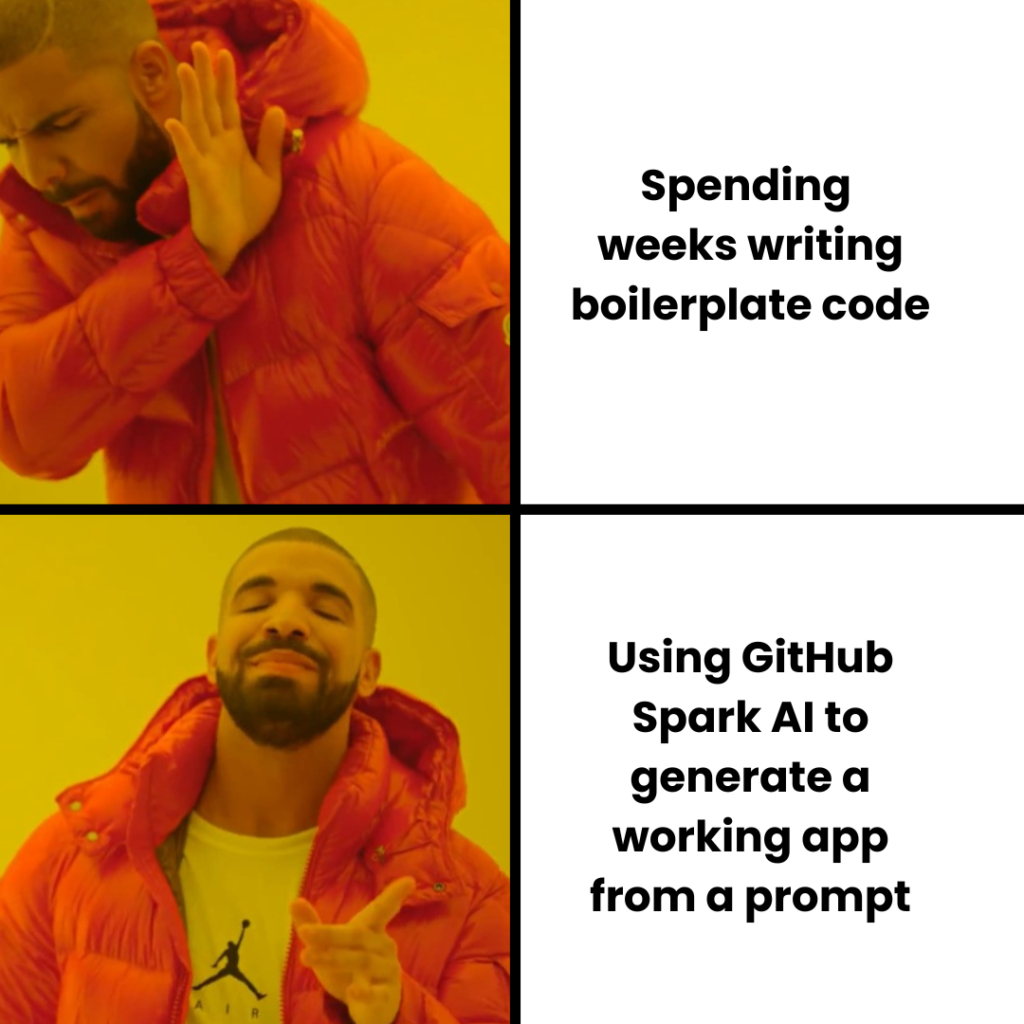
What is GitHub Spark?
GitHub Spark is an experimental AI App Builder that lets you create complete applications using simple natural language prompts. Instead of writing code line by line, you describe what the app should do, and Spark turns your idea into usable code.
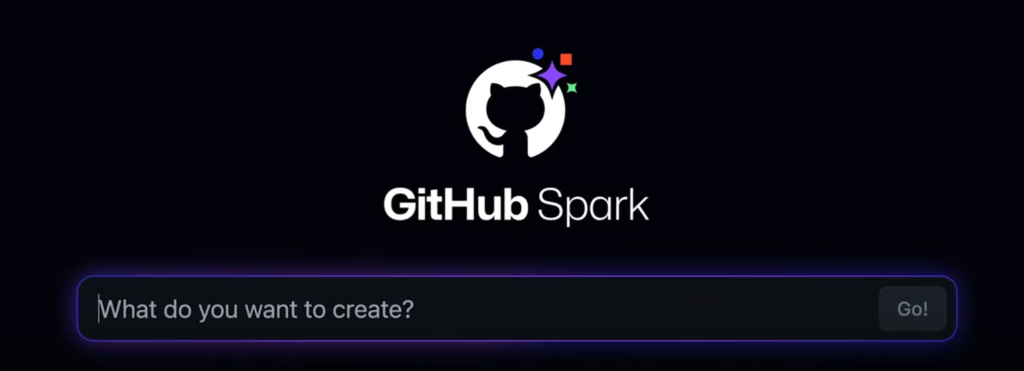
What makes Spark different is that it goes far beyond basic snippets or templates. It can generate full-stack applications that you can preview, test, and adjust in real time, giving you both speed and flexibility in the building process.
Key Features of GitHub Spark
Here are some key features of GitHub Spark:
- Natural language input: Describe your app in plain English, such as “Build a task manager with a calendar and reminders,” and Spark starts creating it.
- Production-ready code: Spark produces clean, readable code that developers can edit and use in real projects.
- Interactive building: Users can refine features, add instructions, and see live previews as the app develops.
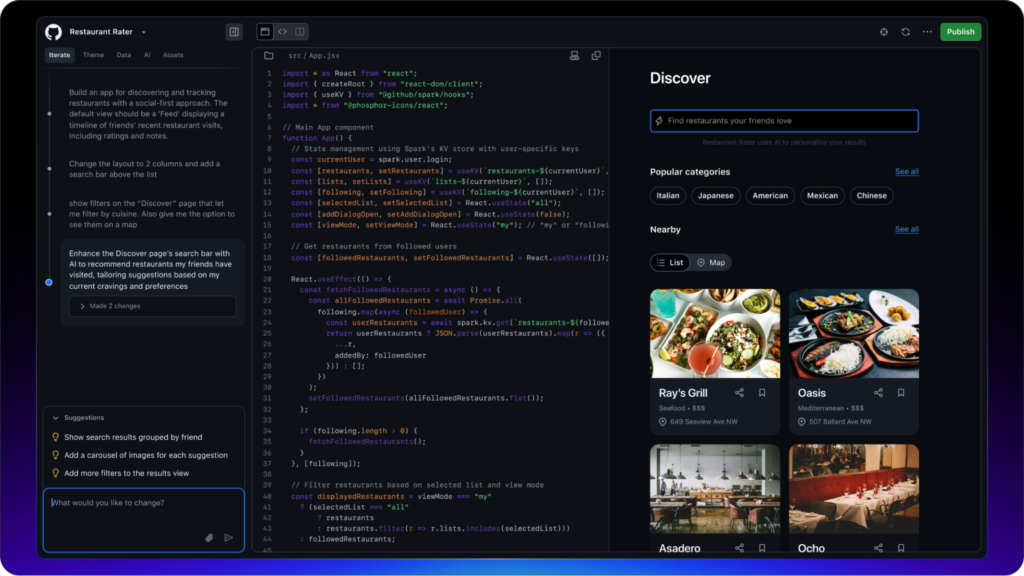
GitHub Spark is part of GitHub Next, the company’s experimental projects hub. While still in development, it highlights how GitHub AI could make app creation faster and more accessible for everyone.
How GitHub Spark Works
Using GitHub Spark is simple and interactive. There is no need to install extra tools or set up a development environment. Next, let’s walk through how GitHub Spark works.
Step 1: The Prompt
You start by describing the app you want to build in plain English. For example, you might say “Build a budgeting app with income and expense tracking” or “Create a social media dashboard.” Spark understands natural language, so you don’t need to worry about syntax or frameworks.
Step 2: AI-Powered Code Generation
Behind the scenes, Spark utilizes Large Language Models (LLMs), the same technology that powers GitHub Copilot, to interpret your request. It selects the appropriate components, frameworks, and structure, then generates a functional application.
Step 3: Output and Interaction
Spark produces a complete application with both frontend and backend code. A live preview lets you test features, refine instructions, and make adjustments as you go. Since you have full access to the codebase, you can edit, download, or continue development in your own environment.
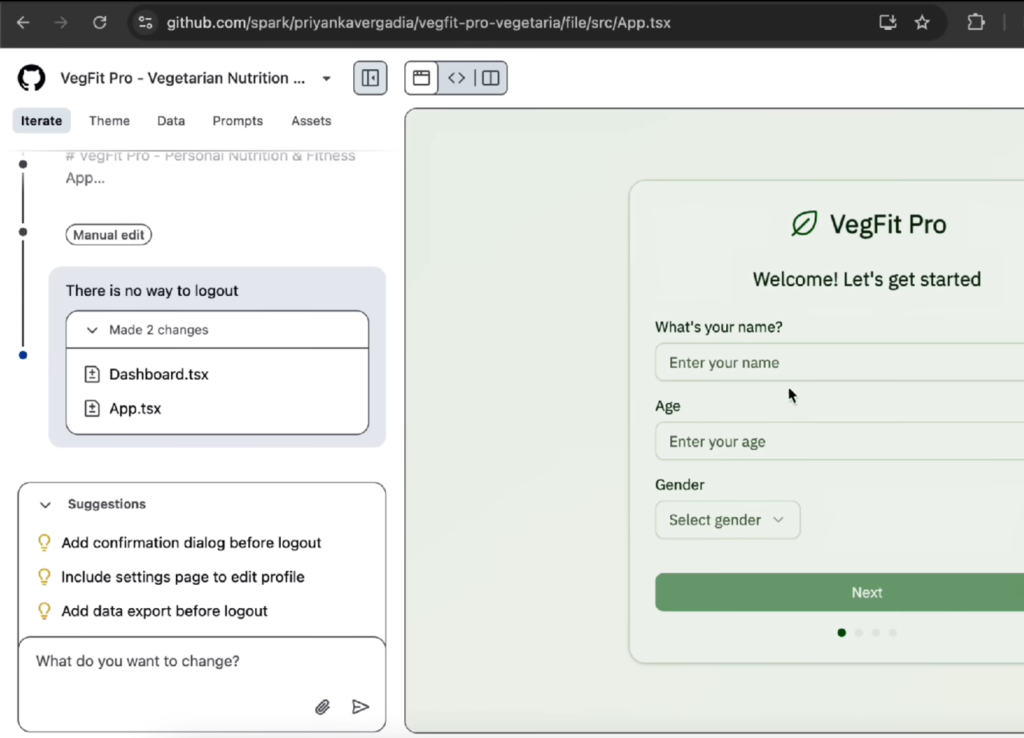
Key Differentiators of Spark
GitHub Spark stands out among AI tools for developers because of its focus on creation. Instead of offering small code snippets, it helps turn ideas into full applications. Let’s explore some of the key differences that make Spark unique.
Compared to GitHub Copilot
GitHub Copilot is an assistant that speeds up coding by suggesting lines of code in your chosen language or framework. GitHub Spark goes further. Instead of snippets, it can generate complete applications from a single prompt, acting as a co-creator rather than just a helper.
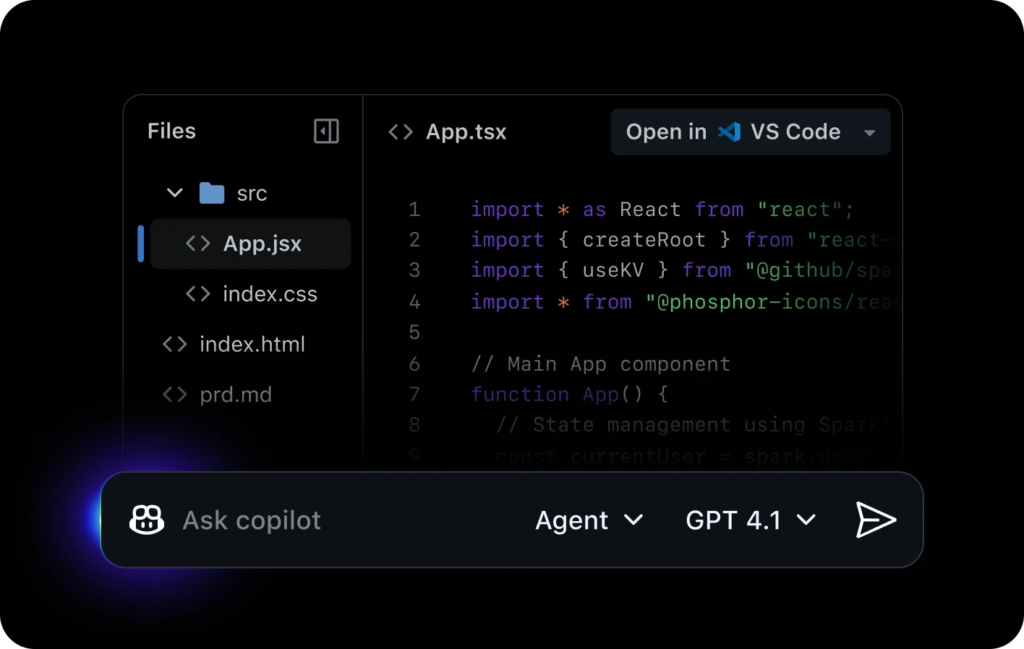
Compared to Other AI App Builders
Many AI App Builders produce limited or rigid code. Spark focuses on clean, production-ready code that developers can edit and extend. Since it integrates with the GitHub ecosystem, it fits naturally into workflows with repositories, commits, and pull requests.
Real-Time Collaboration with AI
Spark works alongside you as you build. You can refine features, adjust designs, and give new instructions while Spark updates the application instantly. It feels like pair programming with an AI partner that listens and adapts in real time.
Potential Use Cases
GitHub Spark AI creates opportunities for a wide range of users, from individual developers to enterprises. Its ability to turn plain language prompts into functional applications makes it valuable across many real-world scenarios.
Rapid Prototyping for Startups and Solo Developers
Startups often work with limited time and resources. Spark helps founders and developers quickly bring ideas to life without spending weeks on setup or boilerplate code. This makes it easier to validate concepts, gather feedback, and pivot when needed.
Hackathons and MVP Development
In hackathons, speed matters. Spark can generate a functional app skeleton within minutes, allowing participants to focus on creative features rather than setup. This gives teams an edge when building minimum viable products under tight deadlines.
Educational Tools for Learning
For students and new developers, Spark works like an interactive classroom. It turns plain ideas into code and helps explain coding patterns, workflows, and modern practices in a hands-on way.
Enterprise Internal Tool Building
Large organizations can use Spark to quickly create dashboards, utilities, and productivity apps. Teams save time on repetitive work while keeping full control of the editable codebase to meet specific business needs.
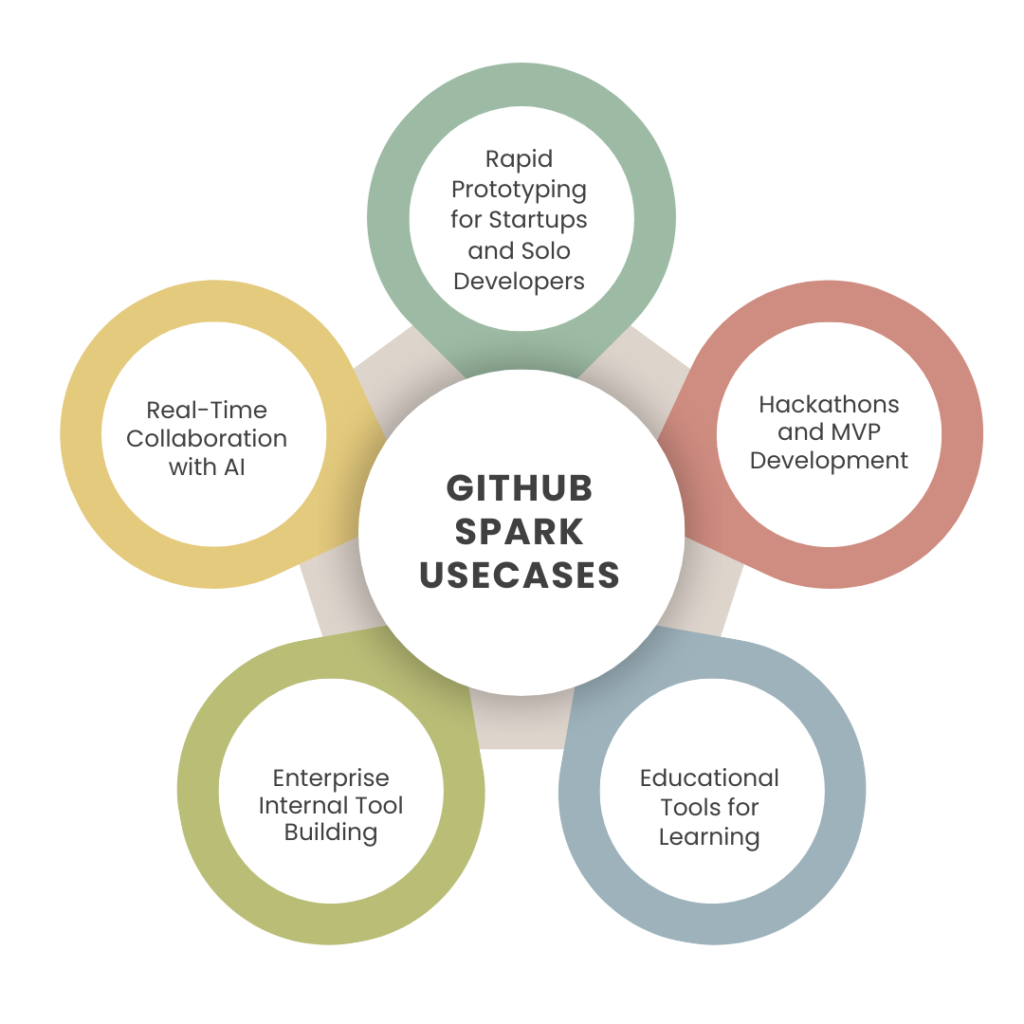
Benefits to Developers
GitHub Spark AI offers several advantages that improve the developer experience across all skill levels. Here’s how it adds value:
- Speeds up development: Spark reduces the time spent on repetitive setup tasks and boilerplate code. Developers can move faster from idea to working product, which is especially helpful in fast-paced environments.
- Bridges skill gaps: For beginners or users from non-technical backgrounds, Spark makes app building more accessible. It lowers the barrier to entry by focusing on what the user wants to create rather than how to code every detail.
- Customization and control: Spark generates real, editable code. Developers can review the codebase, make adjustments, and shape the final product to their standards. This gives flexibility while still keeping the AI as a supportive collaborator.
- Boosts creativity: By handling routine coding work, Spark frees developers to focus on design, user experience, and solving bigger problems. It shifts the attention from coding mechanics to creativity and strategy.
Challenges and Limitations
GitHub Spark AI shows great potential, but like any emerging technology, it comes with challenges that developers and organizations should keep in mind. Here are some factors to consider:
- AI limitations: Since Spark depends on large language models, the quality of generated code can vary. At times, prompts may be misinterpreted, logic may be redundant, or the code may be technically correct but inefficient. Human review remains essential.
- Security concerns: AI-generated code must be audited with the same care as human-written code. Developers need to check for vulnerabilities, compliance issues, and potential flaws before using it in production.
- Scalability: Spark works well for small and mid-level applications, but its performance on complex enterprise-grade systems is still untested. How it scales for high-performance, mission-critical apps remains an open question.
- Currently experimental: Spark is being developed by GitHub Next and is still in an experimental stage. Access is limited for now, though broader availability may follow as the project matures.
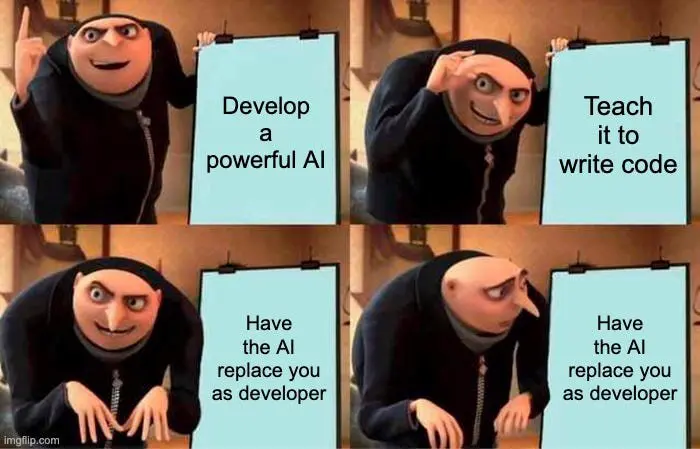
Conclusion
GitHub Spark represents an early glimpse into how AI-powered app builders can make software development more practical and accessible. By allowing users to create functional applications through natural language prompts while retaining full control of the codebase, it strikes a balance between simplicity and flexibility.
Though still experimental under GitHub Next, Spark showcases the growing influence of GitHub AI in shaping the future of development. It lowers barriers for beginners, accelerates workflows for experienced programmers, and points toward a future where turning ideas into working software becomes faster and more achievable for everyone.
This article was contributed to the Scribe of AI blog by Aarthy R.
At Scribe of AI, we spend day in and day out creating content to push traffic to your AI company’s website and educate your audience on all things AI. This is a space for our writers to have a little creative freedom and show off their personalities. If you would like to see what we do during our 9 to 5, please check out our services.
